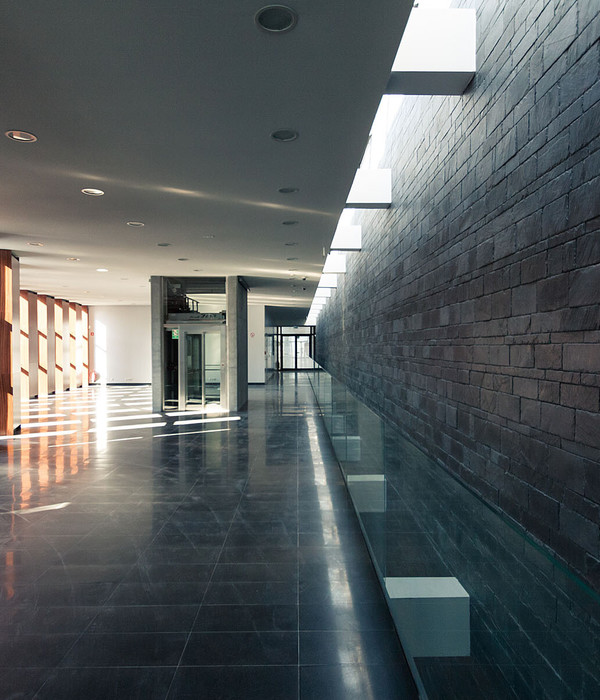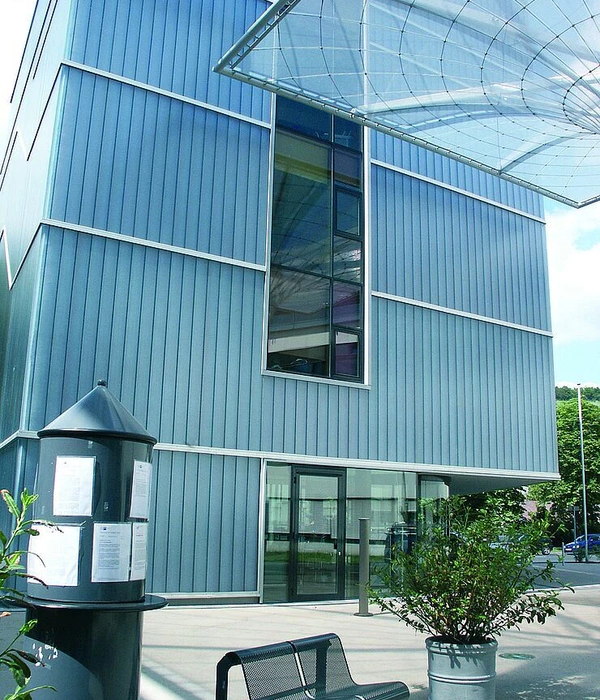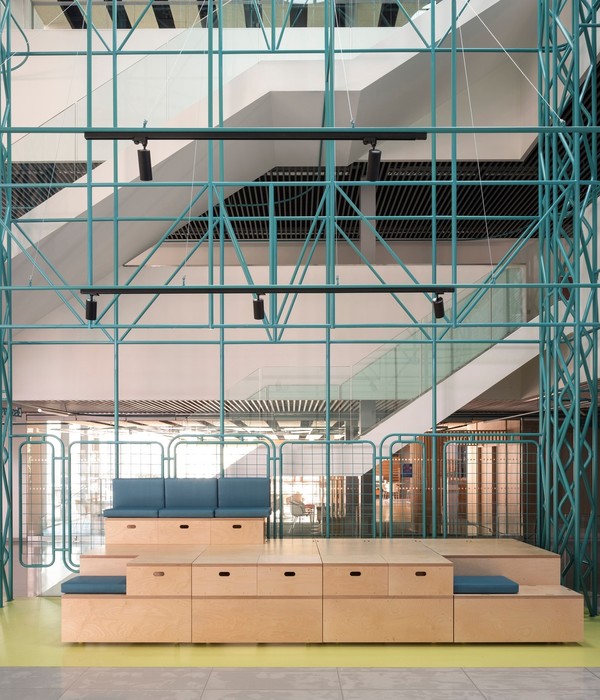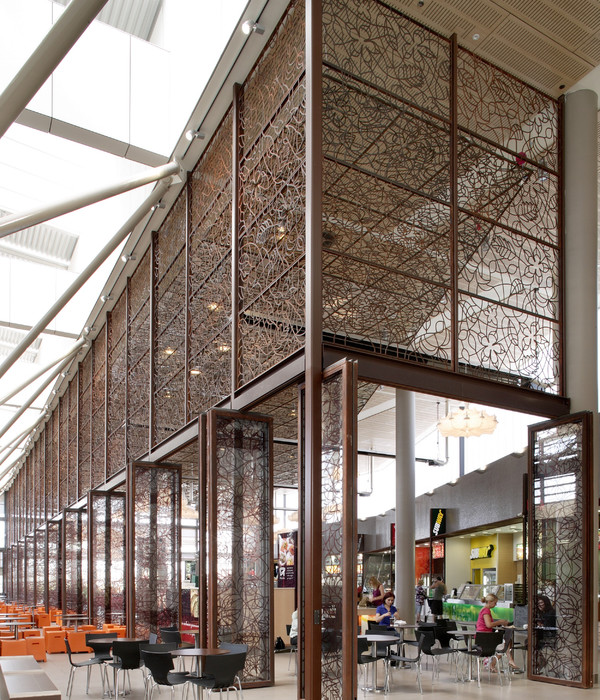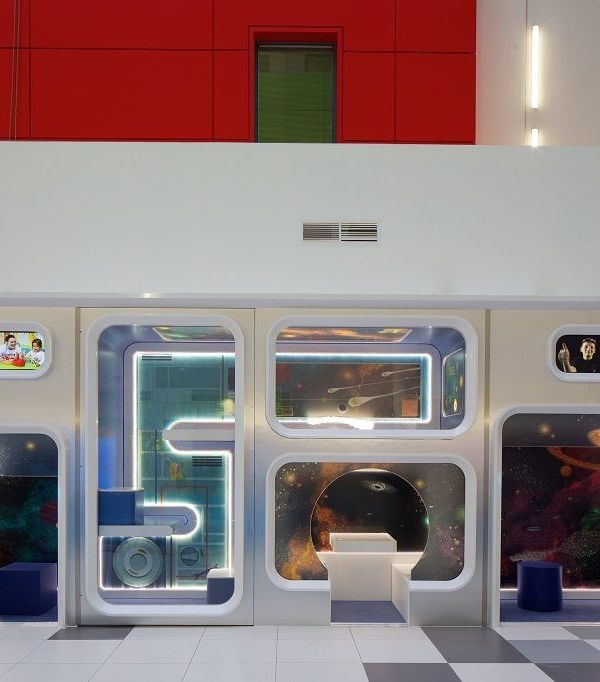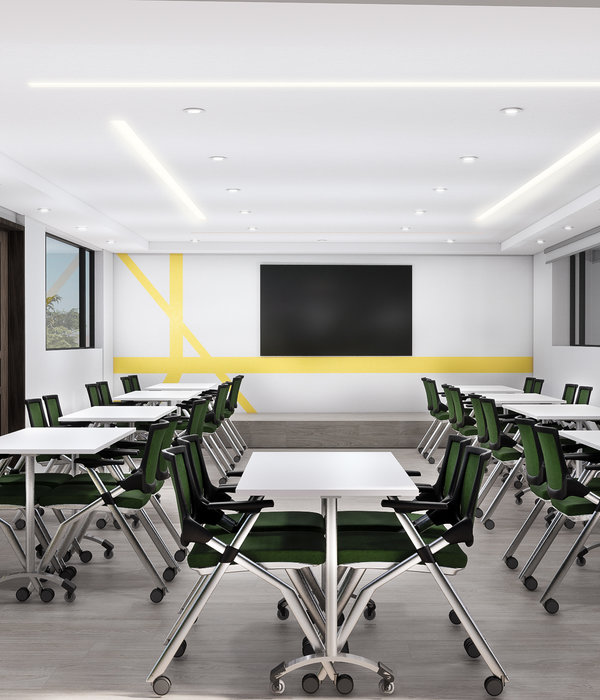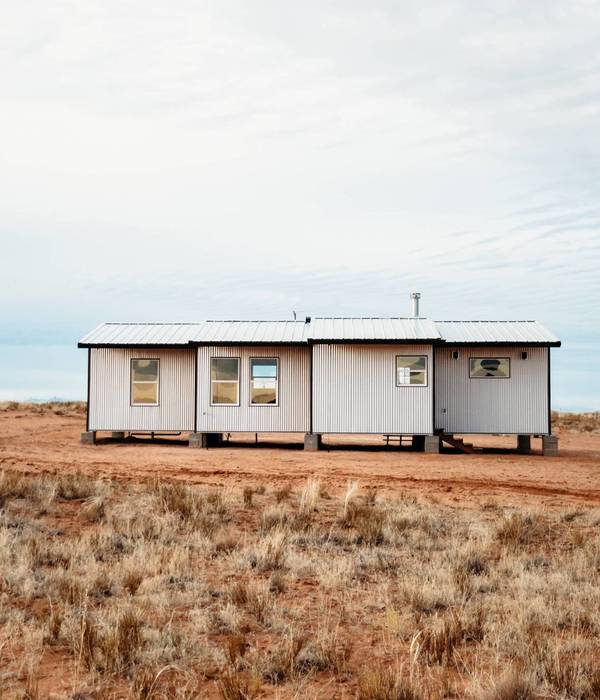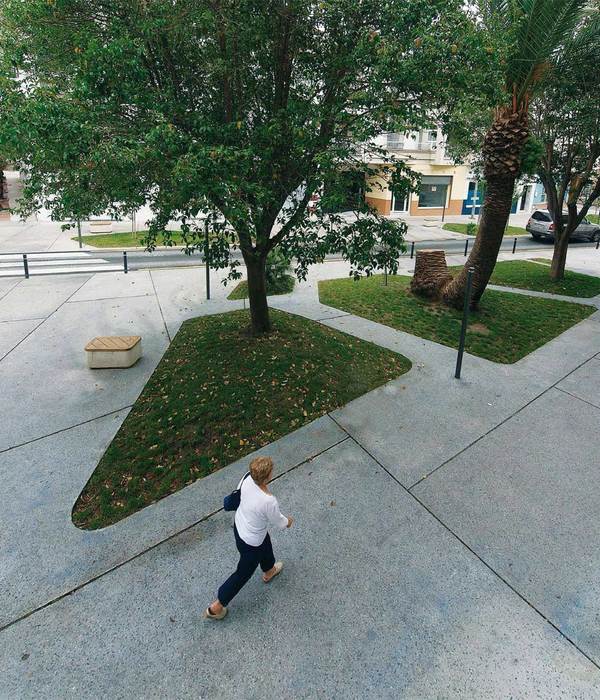Mae Ku学习中心是一座位于泰缅边界附近的新教学楼,它以一个庞大的、形似山峦的单体造型融入到周围的田野当中。该中心是为社区管辖的Min Tu Won学校而设计的多功能教学空间,旨在为当地的缅甸难民和移民社区提供教育环境。在资源短缺且人满为患的情况下,Min Tu Won学校的既有教室空间亟需扩大。学校要求增加新的教室以改善70位学生的学习条件,同时起到促进当地教育的作用。
The Mae Ku Learning Center is a new educational building located near the Thai-Burma border. The building is designed as a mountainous, monolithic object nestled in amidst the adjacent fields. The center is a multi-functional educational space for the Min Tu Won School, a community-led organization that provides education for a local community of Burmese refugees and migrants. Faced with minimal resources, the Min Tu Won School’s existing classrooms needed relief for their overcrowded teaching areas. They sought additional room for 70 students to improve the learning conditions of the school as well as to continue to cultivate and promote local education.
▼建筑外观,exterior view ©Juan Cuevas
为了满足以上要求,新的学习中心提供了灵活的多功能空间:两个大型的室内区域共同组成了一个开放的楼层,可用于教学、自习和互动式学习。随着学校规模的扩大和发展,这些空间将不断地适应新的环境条件。
The new center responds to these needs with a massing of adaptable, multi-functional spaces. Two large interior volumes form an open floor area for teaching, studying and interactive learning. As the school grows and develops, these spaces will be able to accommodate the Min Tu Won School’s evolving conditions.
▼平面图,plan
▼剖面图,section
建筑的形态庞大且充满趣味,能够鼓励孩子们主动参与和探索。建筑整体使用了天然的当地材料,以便更好地融入周围环境。独特的造型使学习中心从远处便显而易见,从而成为学生们上学路上的独特风景。
The building is designed with playful, massive shapes assembled together for children to engage and explore. Natural, locally sourced materials are used throughout the building to integrate the object within its surroundings. The center is visible from afar, an enticing destination for the long distance that many students travel to come to school.
▼建筑以天然的当地材料建造而成,natural, locally sourced materials are used throughout the building ©Juan Cuevas
▼入口区域,entrance ©Juan Cuevas
▼两个区域的交界处,the joint of two large interior volumes ©Juan Cuevas
宽敞的教室配备以黑板、固定座椅和储物空间。开放的平面使学习区域可以灵活地布局。屋顶天窗为室内带来柔和而自然的光线。
The large classroom volumes feature blackboards, built-in wall benches and storage space. An open floor plan allows for flexibility in the arrangement of the learning areas. The interior is illuminated with soft, natural light using skylights.
▼天窗带来自然光线,the skylights bring soft, natural light in ©Juan Cuevas
▼教室空间,classroom volumes ©Juan Cuevas
▼使用中的教室,classroom with students ©Juan Cuevas
空间外部包覆着精巧细致的竹制表皮,为学生们带来一个充满探索趣味的隧道空间,同时过滤了阳光、为建筑赋予了深度和空间感。竹制表皮充当了环境的调节者,使内部的夯土墙壁免受日晒和雨淋,同时带来新鲜的空气和宜人的微风。
A delicate, veiled bamboo skin wraps the interior spaces, creating a world of passageways and spaces for students to discover. Sunlight is filtered through, adding depth and volume to the building. The bamboo skin acts as an environmental mediator, screening the interior rammed earth walls from direct sunlight and rain while welcoming fresh air and breeze to pass through.
▼外部的竹制表皮,the bamboo skin wraps ©Juan Cuevas
▼充满探索趣味的隧道空间,a world of passageways and spaces for students to discover ©Juan Cuevas
▼竹制表皮为内部的夯土墙提供保护,the bamboo skin screens the interior rammed earth walls ©Juan Cuevas
遵循Estudio Cavernas的一贯理念,设计使用了简单易行的低技术建造系统,从而可以凭借普通的材料和技能来完成施工。项目的受益者们全程参与了项目的设计和建造并在此过程中树立了自豪感和主人翁意识——这将有利于学校未来的维护和发展。
As part of the philosophy of Estudio Cavernas, the design of the building uses low-tech constructive systems that can be built by all workers, ensuring that most of the systems are adapted to the available materials and skills. The beneficiaries of the project are involved throughout the design and construction process, allowing them to take pride and ownership in the building and to encourage the continued success and maintenance of the learning center.
▼内部空间细节,interior view ©Juan Cuevas
Mae Ku学习中心是曼谷朱拉隆功大学INDA项目“社区设计与建造”课程内容的实践成果。该课程由Preechaya Sitipunt博士创办,其初衷是通过整合泰国的社区与大学资源来创造有意义的项目。设计与建造课程汇集了曼谷的20位学生,使其针对建筑体块、材料和功能空间进行研究,并通过现场调研和协作设计来完善和记录项目,最终参与到实际的建设当中。
The Mae Ku Learning Center was developed through the Design and Build for Community course at the International Design and Architecture (INDA) program at Chulalongkorn University in Bangkok. Started by Dr. Preechaya Sitipunt, this course connects communities from throughout Thailand to the university resources to create a meaningful project. The design build course gathered twenty students in Bangkok to study mass, material and program. Through site visits and a collaborative design process, students worked to refine and document the project and then participated in the building construction on site.
▼建造过程,construction process ©Juan Cuevas
课程的教学由来自WIWA-Studio的Wisarut Eric Wattanachote和来自Orbe Architecture的Jason Orbe-Smith担任。项目的设计和建造是在与Estudio Cavernas的合作下完成。
The course was taught by Wisarut Eric Wattanachote of WIWA-Studio and Jason Orbe-Smith of Orbe Architecture. The project was realized through a design and construction collaboration with Juan and Yago Cuevas of Estudio Cavernas.
▼立面夜景,facade night view ©Juan Cuevas
▼场地平面图,site plan
▼立面图,elevations
▼剖面图,sections
Area: 147m2
Location: Mae Ku, Tak, Thailand
Project Year: 2017
Architects/Designers: “INDA (Group 2014-18))
Orbe Architecture (Jason Orbe-Smith)
Estudio Cavernas (Yago Cuevas, Juan Cuevas)
Wisarut Wattanachote
Napapat Lasavanich, Gunn”
Lead Architects: Jason Orbe-Smith, Juan Cuevas, Yago Cuevas, Wisarut Wattanachote
Typology: Educational
Budget: 14.000Eur.
Construction: Estudio Cavernas
Funded by INDA, Orbe Architecture, Johny Org.
Text: Jason Orbe-Smith
Photography: Juan Cuevas
{{item.text_origin}}

